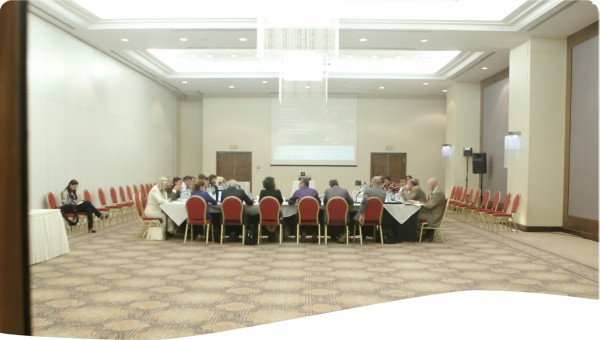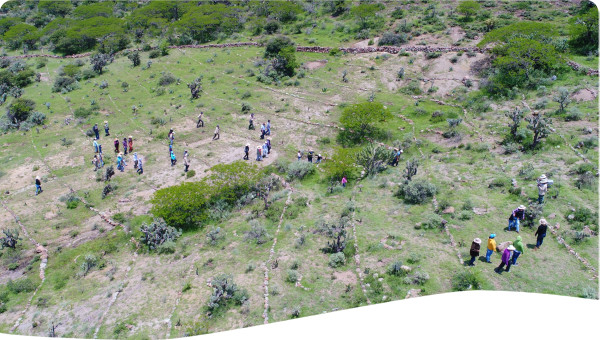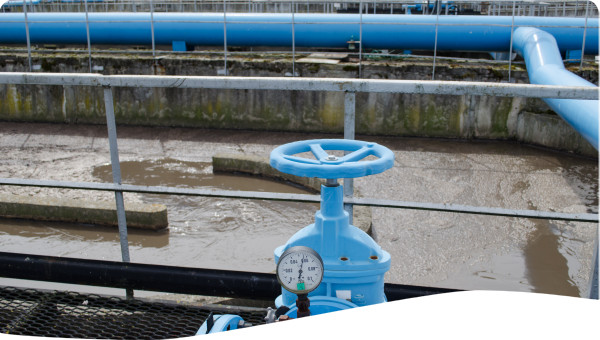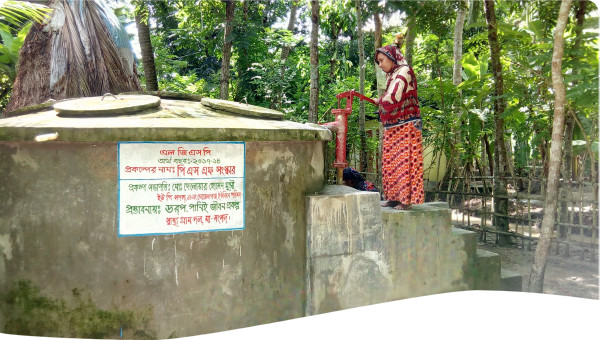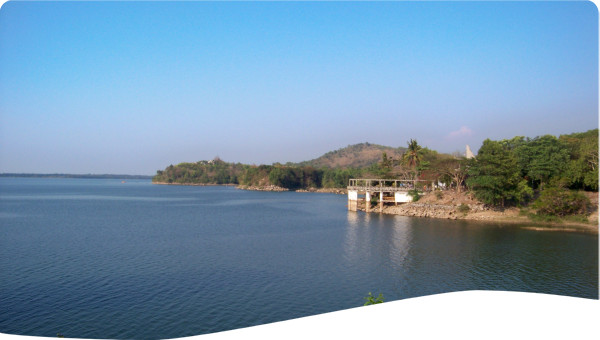Egypt’s water resources are severely constrained. This calls for increasing the water use efficiency by improving irrigation management practice, as the agriculture sector is the main user of water resources. To address the issue, an Irrigation Improvement Programme was initiated, including a combination of technical changes and infrastructure investment. The case clearly demonstrates the importance of building appropriate institutional structures in parallel to the introduction of technical changes.
Egypt’s water resources are severely constrained. This calls for increasing the water use efficiency by improving irrigation management practice, as the agriculture sector is the main user of water resources. Much of the irrigation infrastructure is elderly and in need of rehabilitation.
The irrigated agriculture system in Egypt has been always in a dynamic state for either internal or external reasons. Changing polices such as the transfer from administered economy to privatization, the dynamic change of the cropping pattern, out flow or immigration from rural areas to urban areas and to foreign countries, return of immigrants after the Gulf war, new international agreement such as the Global Agreement of trade (GAT), new irrigation improvement Projects (IIP) in some areas, new technologies such as introducing new crop varieties, fertilizer application, short season varieties, high yield varieties: all these have a direct impact on irrigation practice, but may also be subject to change.
The present phase of IIP comes at a time when the Government is moving away from its former development strategy, based upon centralized ownership and planning, towards a decentralized, market-based and outward-oriented economy. Significant progress has been made in liberalizing the agricultural sector since the mid-1980s, including the removal of a range of quotas, price controls and input subsidies, and the privatization of various agricultural production projects and state-owned new lands.
The focus of the earlier programmes was on physical rehabilitation of the irrigation networks, but by the late 1980s, the USAID assisted IIP included strengthening the capacity of the Ministry of Public Works and Water Resources to implement improvement projects, the Development of the Irrigation Advisory Service and the organisation of Water Users Associations, as well as the establishment of policies and procedures for a cost recovery program associated with irrigation improvements.
The most significant measure from the point of view of irrigation water demand is probably the removal of crop area allocations. In the past, principal cropping patterns and areas were fixed and enforced by the Ministry of Agriculture and Land Reclamation but with liberalization, farmers are responding to market forces in their cropping plans. In the absence of any water charges reflecting the true economic value of this limited resource, there has been a tendency for farmers to opt for rice during the summer season, increasing the overall water demand. For the 1998 season, formal restrictions on the area of rice cropping were introduced.
The irrigation improvement program (IIP) is one of the large-scale projects to help Egypt to sustain its ambitious development plan. The project is being implemented by the irrigation improvement sector of the Ministry of Water Resources and Irrigation (MWRI).
The program involves a combination of technical changes and infrastructure investment, together with institutional and organisational changes in the way irrigation water is managed.
It has been recognized that the beneficiary farmers can only attain long-term sustainability of irrigation through the sharing of both capital and O & M costs. Although farmers have traditionally cooperated to organize, and pay for, operation and maintains at mesqa level, they did not have their own formal organizations for doing this (although the District engineers, to make arrangements on the farmers’ behalf). Existing agricultural cooperatives are not oriented towards water distribution, being largely established and controlled by Government as a vehicle for subsidized in put distribution and state purchase of agricultural production and membership was mandatory. Therefore, in recognition that new institutions were required, the government has, through law 213 of 1994, amended Irrigation Law 12 of 1984 to enable the MWRI to:
- Organize farmer groups to operate and maintain mesqa facilities;
- Maintain mesqas and tertiary drains at the farmers’ expense, should they fail to do so themselves;
- Implement mesqa improvements and recover the full capital cost of these improvements (without interest);
- Establish a special revolving fund within the Ministry of Finance for future mesqa improvement.
Of key importance, Water Users’ Associations playing a major role in decision-making and the operation and maintenance of the pumps and mesqas by themselves, with minimal assistance from the Irrigation Advisory Service staff.
The fundamental change introduced by the irrigation improvement is to replace individual farmer pumping at multiple points along the mesqa (irrigation ditches) by collective single point pumping.
In addition to the above primary aims, there are many other aspects to the project, including intensive training for water users, the IAS, and all levels of personnel involved to the top of the ministry; special studies and seminars, workshops to help the execution of such a program.
The overall objectives of the project are:
- To increase agricultural production and farm incomes by improving the irrigation infrastructure, facilitating a more equitable distribution of water and improving on-farm water management;
- To improve the long-term sustainability of irrigation, through the assumption of responsibility for operation and maintenance at the tertiary level by farmers, and establishing cost sharing arrangements for tertiary level investment costs;
- To strengthen the institutional planning and implementation capacity of MWRI in the irrigation sector.
In Egypt, where one of the largest gravity irrigation systems of the world has existed for many centuries, users have played a major role in the management at various periods of history. Right now the idea of users’ participation is becoming reality once again. The experience of implementation of the current Irrigation Improvement Project (IIP) in many governorates of Egypt, illustrates that users’ participation is essential for both sustainability and higher system performance.
In recent years irrigated agriculture system has experienced many changes such as the Privatization Policy, Free Cropping Pattern, and the Irrigated Improvement Project. Even though these changes are recent, it is already clear that user’s participation has helped in increasing the performance of system through upgrading the capacity of the users, operators and managers of the system.
The process of involving users in the management can lead not only to real water savings but also to increased crop production. Early involvement of users in the modernization of the irrigation system does assure a high quality control of the implemented project, so the sustainability of the system is maintained.
The irrigated agriculture systems are characterized by high degree of interdependency between its upstream and downstream also, there is high level of interchanging impact between parties involved in the supply – demand equation whether they are managers, operators and or users.
The Ministry of Water Resources and Irrigation (MWRI) is launching new program in the media to increase the awareness of the Public in dealing with water, also a new law was issued in order to legalize the participation of the users in the management of the system.
The case shows clearly the importance of building appropriate institutional structures in parallel to the introduction of technical changes, and sets the irrigation reforms in a broader policy context – e.g. general agricultural and economic liberalisation. It also illustrates the importance of testing and piloting programmes over several years as a basis for strong institutional structures.
The new program has been built on the experience of earlier irrigation programs; there is a body of knowledge that has been tested and piloted which provides underlying strength to the new reforms.
To increase the efficiency, the performance, and the modernization process of the systems which would assure sustainability, user’s participation in the management is a must since their decisions and ideas have a great impact on the operators.
Increased crop production and achievement of real water savings in the system is dependent on the awareness and understanding of both users, and operators and managers of the system.
Increasing the capacity of users, operators and managers requires intensive training. Now in Egypt the new generation has accepted the concept of user participation in the management and the the formation of water users association was legalized.
 Case studies
Case studies